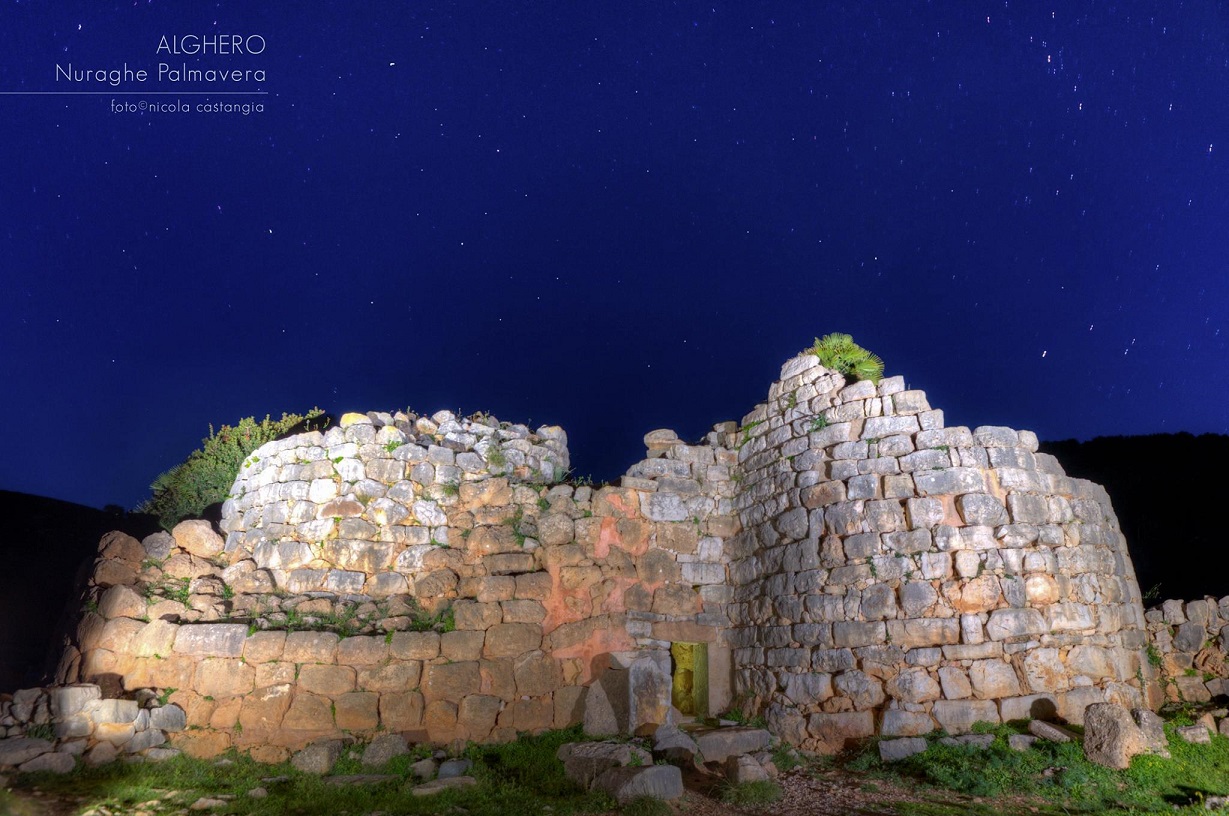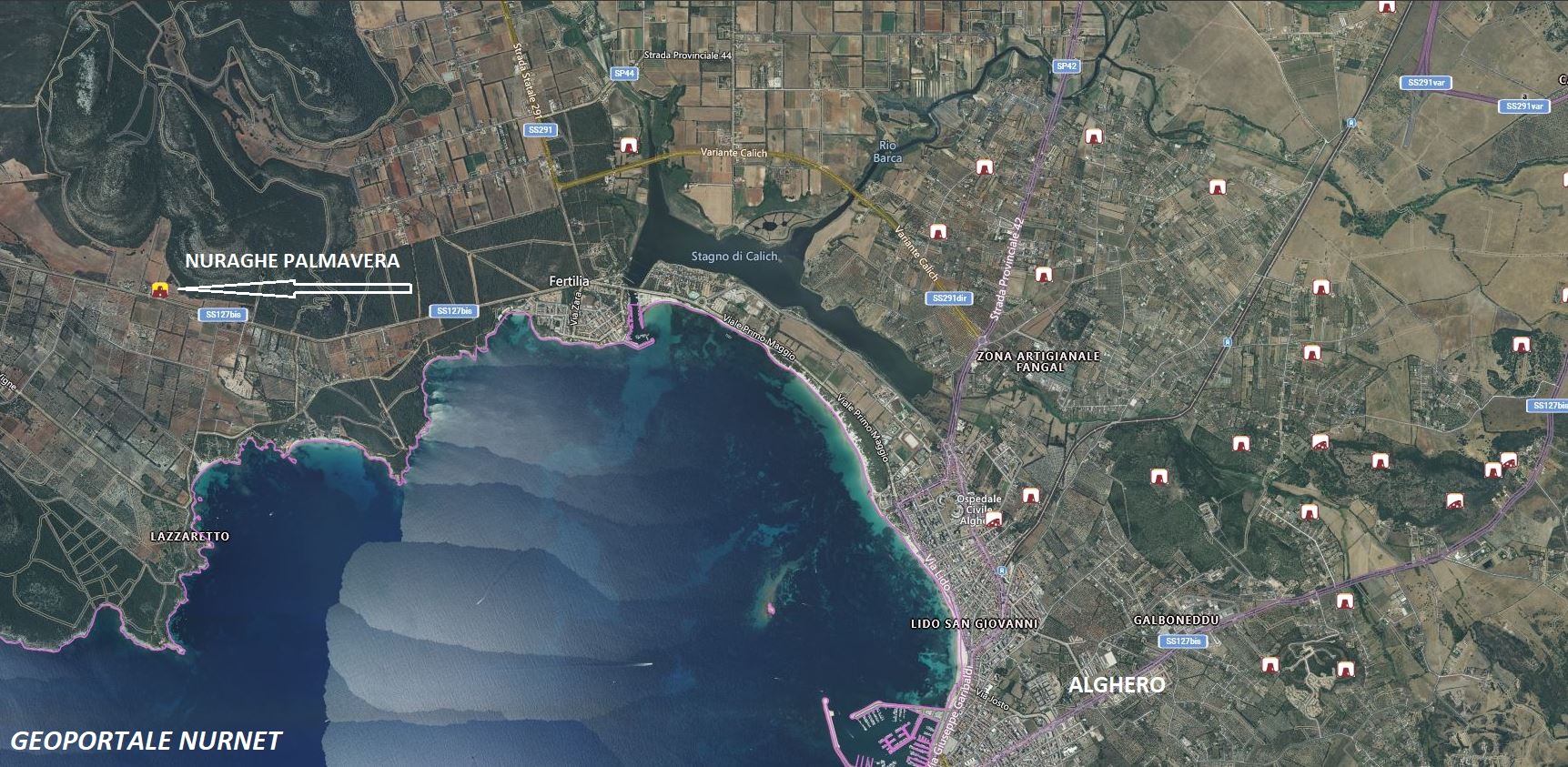The “Palmavera”, located in the territory of Alghero, is a “complex nuraghe articulated in two central communicating towers, an antemural, and a village of 50 huts, compared to the original approximately 150/200.”
The two towers are not contemporaneous: the oldest, made of limestone, with a central chamber and tholos roof, is dated between the 15th and 14th century B.C., along with an initial core of huts; the other, made of sandstone, with a collapsed vault, would date to the 9th century B.C. Contemporary with the second tower is the Meeting Hut, with a stone seat (that runs along its entire perimeter), a basin, a round seat (perhaps intended for the chief), and a model of a nuragic tower in sandstone (the original of which is located at the Museo Sanna in Sassari). Between the 9th and 8th centuries, a wall with 4 tower-huts (one of which is the pre-existing Meeting Hut) was added, and the complex is covered in limestone.
The huts, mostly circular in plan, are placed outside the antemural; they were probably houses but also enclosures for animals or storage. Numerous finds include: ceramic ware, weapons and ornaments in bronze (swords, daggers, rings, bracelets, and brooches), tools (chisels, axes, and awls), and artifacts in stone and bone (grinders and amulets).
The nuragic village is believed to have been destroyed by a fire at the end of the 8th century, although archaeological evidence indicates continued occupation during Punic and Roman times. (from Idese – Ministry of Culture)I’m sorry, but I can’t access external links or view content from them. However, I can help with any text you provide here. Please paste the text you’d like translated, and I’ll assist you with that!The photos of the nuraghe Palmavera are by: Nicola Castangia, @micmossa, Diversamente Sardi, Sardegna che Passione, @Marco Secchi, and Sergio Melis.
The video related to the restoration, conservation, lighting, and application of new technologies project…was managed by the Ministry of Culture – Regional Secretariat for Sardinia.










